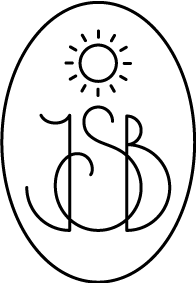
Vienna Clarinets
Discover the timeless beauty, elegance and warm sound of our clarinets from the Viennese sound tradition.
INDIVIDUAL CHOICE OF WOOD
With our Vienna clarinets, we offer you the option of choosing between four types of wood. Each type of wood gives the instrument an individual sound characteristic and allows you to find the perfect sound for your music.
M2000 with OWB vs. Vienna Model
During the lockdowns in 2020 and 2021, we have intensively studied the history of the development of the clarinet in Vienna and conceived two new model variants with a “Vienna bore”. Both variants can be ordered via our configurator.
Model 2000 OWB
Model 2000 Original Wiener (=Vienna) Bore – or short: OWB. This was developed on the basis of our Model 2000. The bore is straighter and more cylindrical than our wide bore. All possible mechanical variations are available here according to our configurator.
We have developed this bore not only for Schwenk & Seggelke clarinets, but also for the Seggelke-Line Bb and A clarinets.
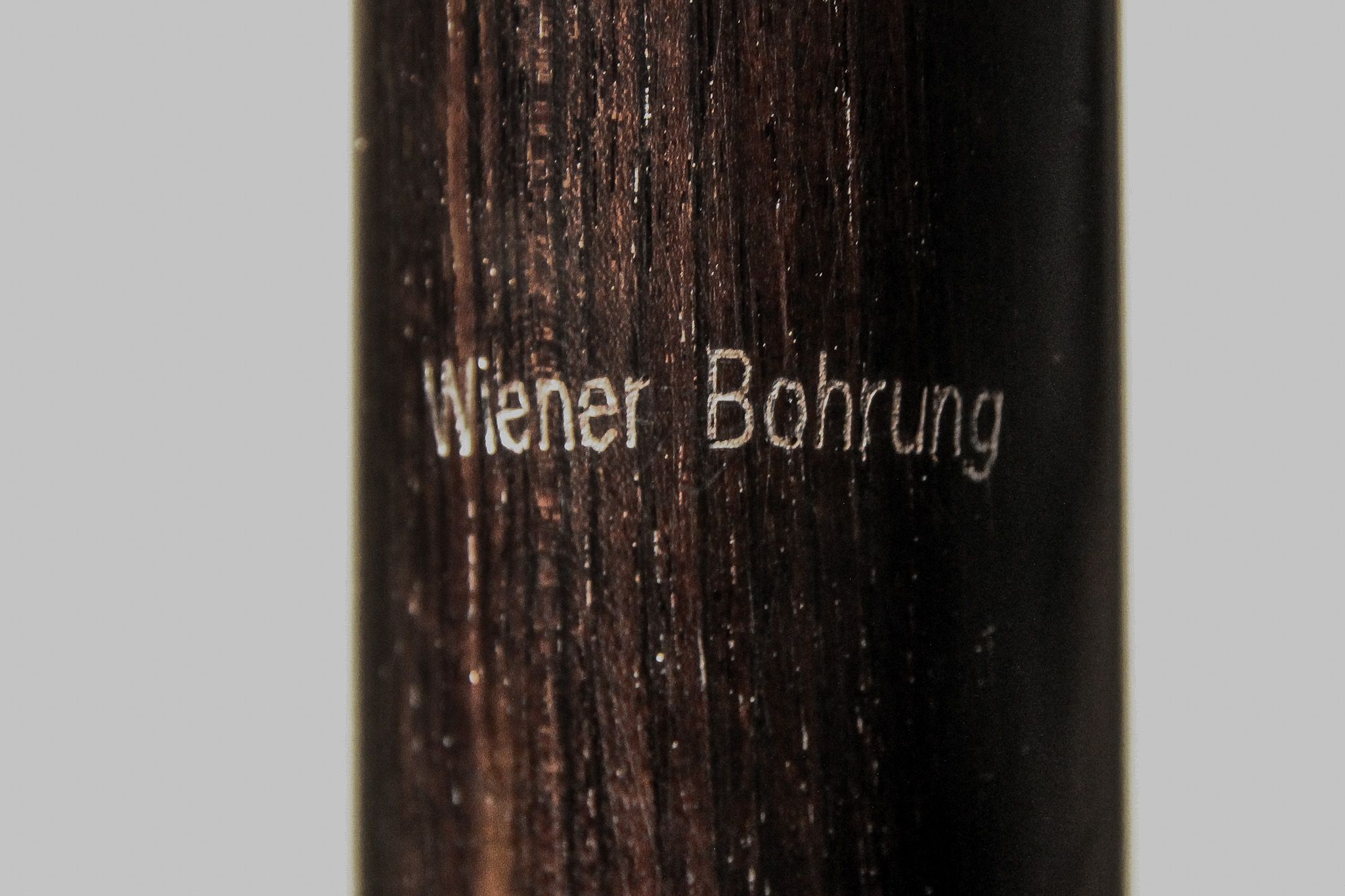
Vienna Model
Our “Vienna model” is based on the body lengths, tone hole positions and mechanical features of the clarinets by Franz Koktan jr. from Vienna around 1910. Why do we believe we can realize a “Vienna model”? Because with our many years of experience in rebuilding historically significant clarinets, we have learned not only to measure, but also to interpret measurements and have tested various possibilities. Among other things, a clarinet formerly owned by Leopold Wlach (clarinetist with the Vienna Philharmonic from 1928) played a role, as well as many clarinets still in use today from well-known Viennese musicians who kindly supported us.

MECHANICAL FEATURES
VIENNA MODEL
Preconfigured keywork
The standard equipment of the Vienna model includes a correction key for e’/b” on the upper joint, which enables even more precise intonation. All clarinets in this model series are built without a second C key and with a cross mechanism on the lower joint. Of course, there are also a number of options for trill keys, e-flat and f-lever or Low E and F corrections.

Register key with connecting mechanism
Our Vienna model is built with a connecting mechanism as standard. This mechanism enables a well-tuned c”’ sharp (as played with the left thumb). The f sharp resonance hole is closed automatically.
Side trills
With our a’-bb’ trillmodel, the trill hole is closer to the top trill. The a’ to bb’ trill key can be used to trill not only a’ to bb’ but also ab’ to bb’, bb’ to b’ and c”’ to d”’.
Our Model 2000 is also optionally available with an f’-g’ trill. Here the trill tone hole is roughly at the same height as the tone hole for ab’. a’ to b’ and c”’ to c”’ sharp are trilled with the top trill. c”’ to d”” is played with the additional second key, as is f’ to g’ (particularly useful if the second c”’ key has been built). If the two upper trill keys are pressed simultaneously, bb’-c” can be trilled. a’ to bb’, ab’ to bb’ and bb’ to b’ require considerably more effort than clarinets with an a’-bb’ trill key.
Of course, it is also possible to limit the number of trills to three. In this case, the clarinet only has an a’ trill key, c’ trill key and short bb’ trill key.
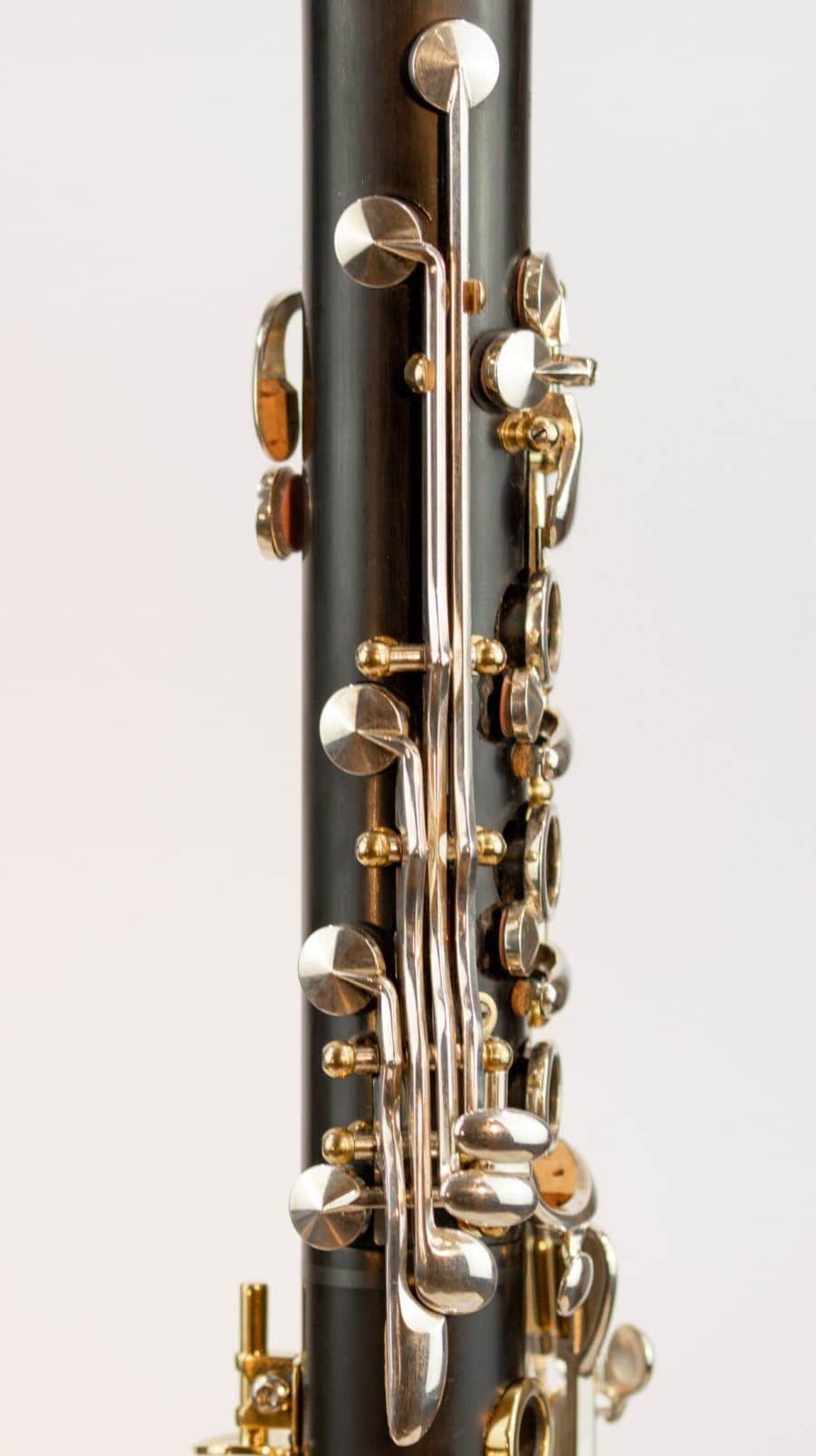
a-bb trill
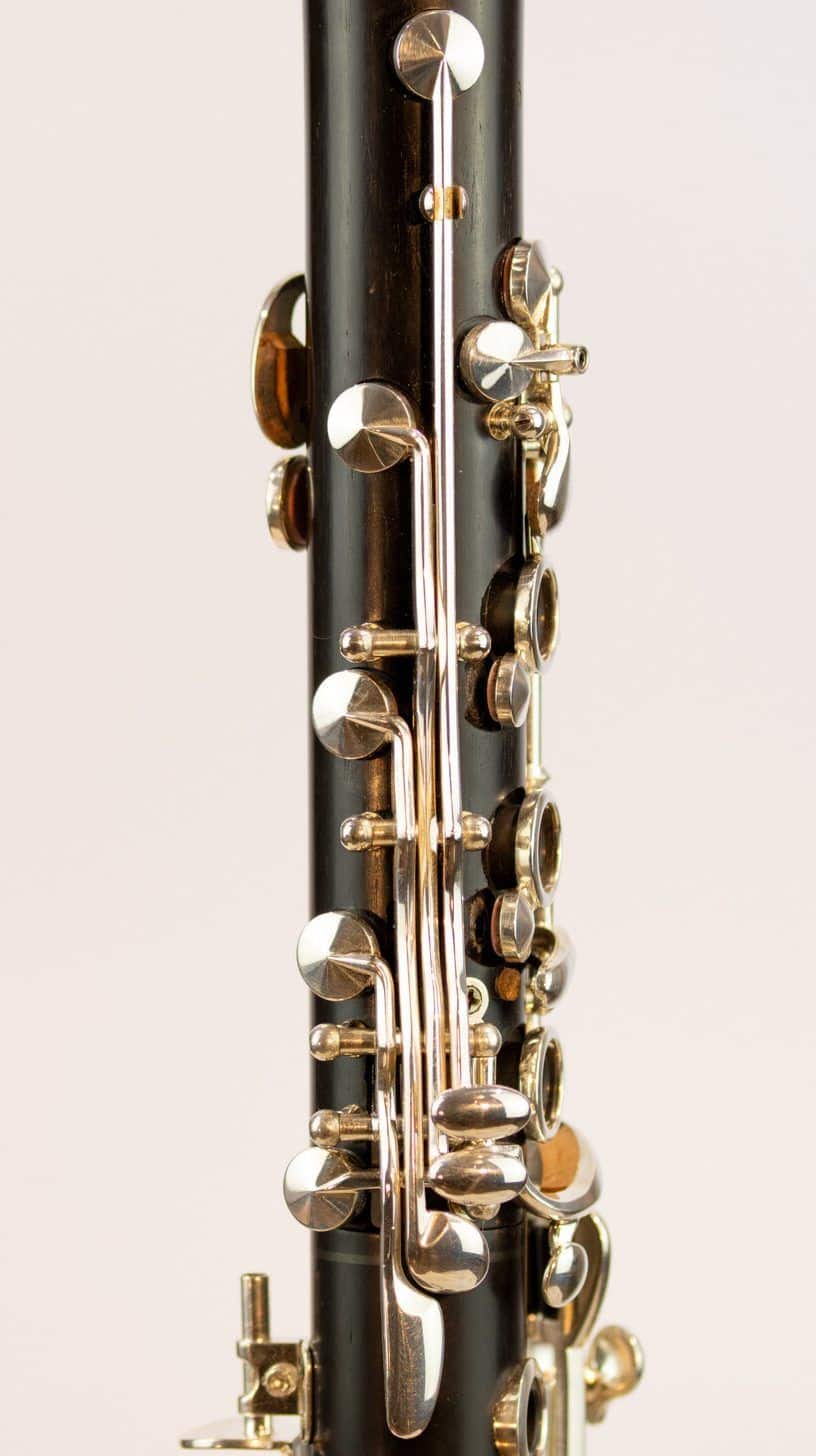
f-g trill
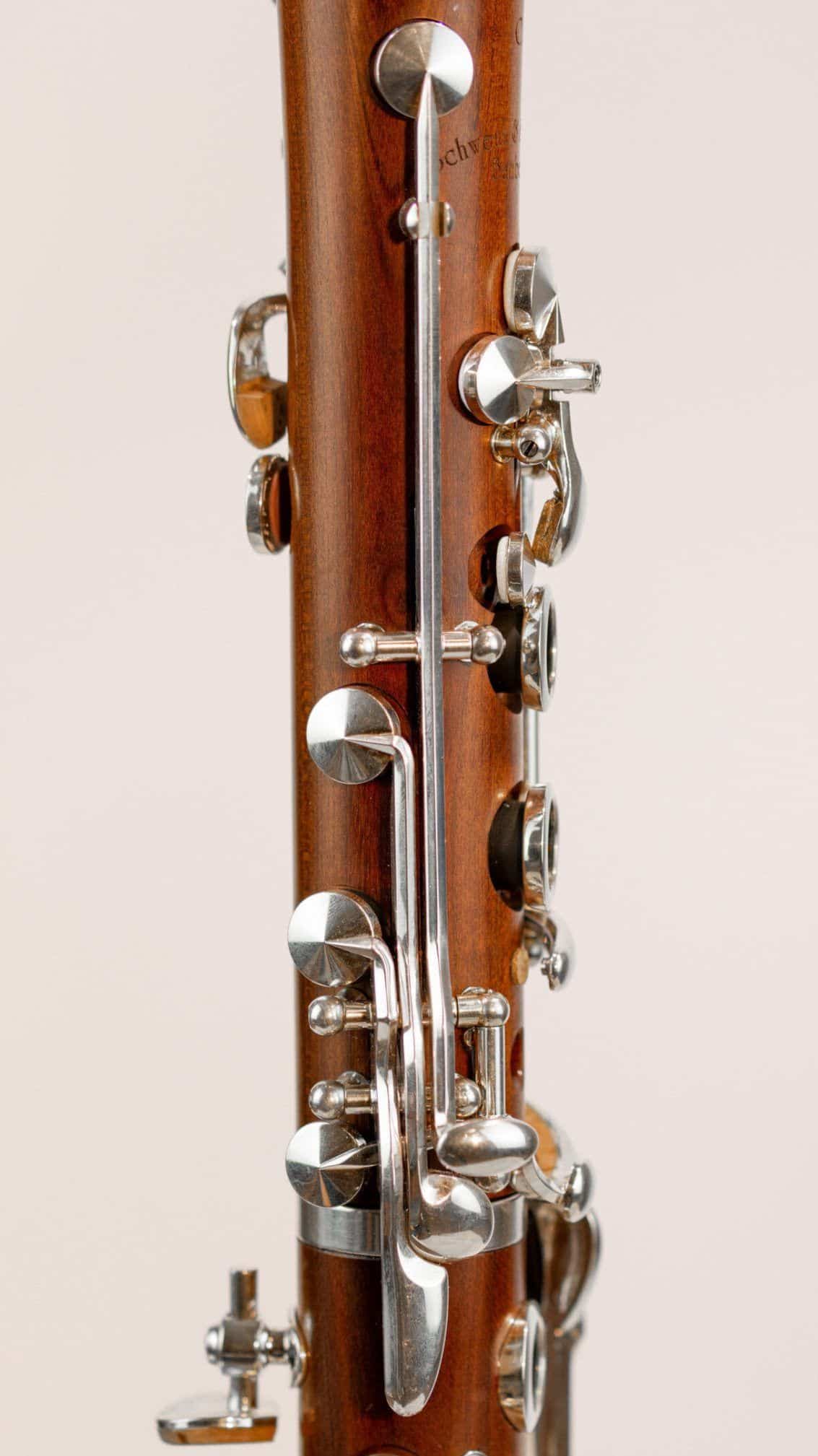
3 trills
f and e flat levers
Both levers for the left little finger, f and e flat, are alternative fingerings for the keys otherwise played with the right hand and date from the time of the Baermann/Ottensteiner clarinet around 1860. For a long time, the e-flat lever was used instead of a fork-f resonance key in order to be able to intonate the fork-fingering f” high enough. Today, the f-lever is preferred in order to be able to avoid slipping the ring finger on the right and to avoid the sound of the fork fingering. Where we can get to know our customers’ hands, these lifters are positioned so that the little finger can make optimum use of them. Find out more on our page on custom-made products.
With us, you have the choice of having both levers fitted to your instrument, just one of them or none at all. On request, we can also build our Model 2000 with Viennese bore and the Viennese model from the outset in such a way that one or both of the lifters can be easily retrofitted.

f and e flat levers

only f- or e flat-lever
Bell
Schwenk & Seggelke clarinets are available without any bell mechansim, with a low E-mechanism or with a low E-F mechanism. In some rare cases, we have also built clarinets with the low F-mechanism only. The low E-mechanism corrects the intonation of the low E through a resonance hole in the bell. The low E-F mechanism also corrects the low F through a small resonance hole with a corresponding key mechanism on the lower joint. These two mechanisms are the same for all Schwenk & Seggelke models in A and B flat.
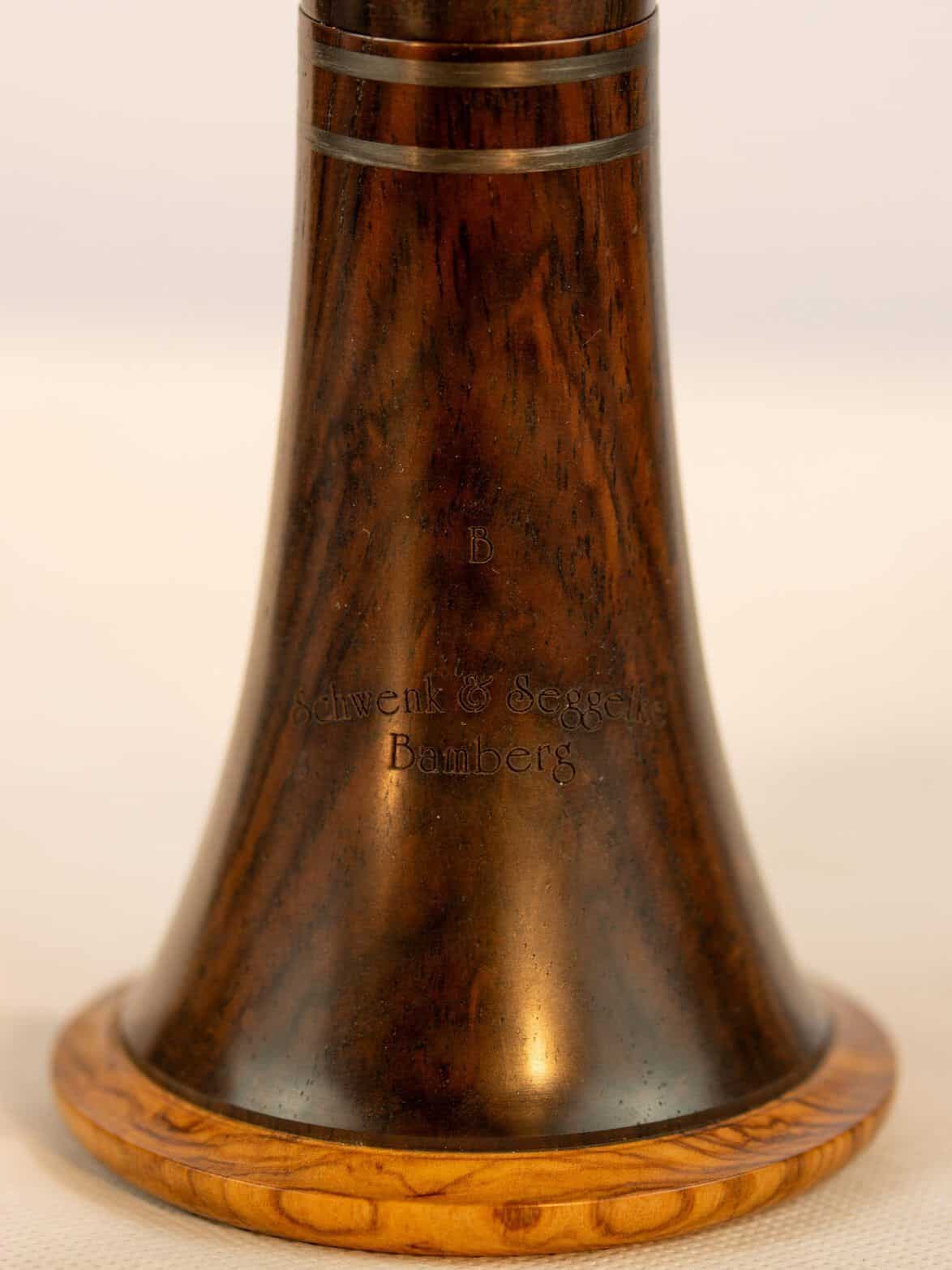
without bell mechanism
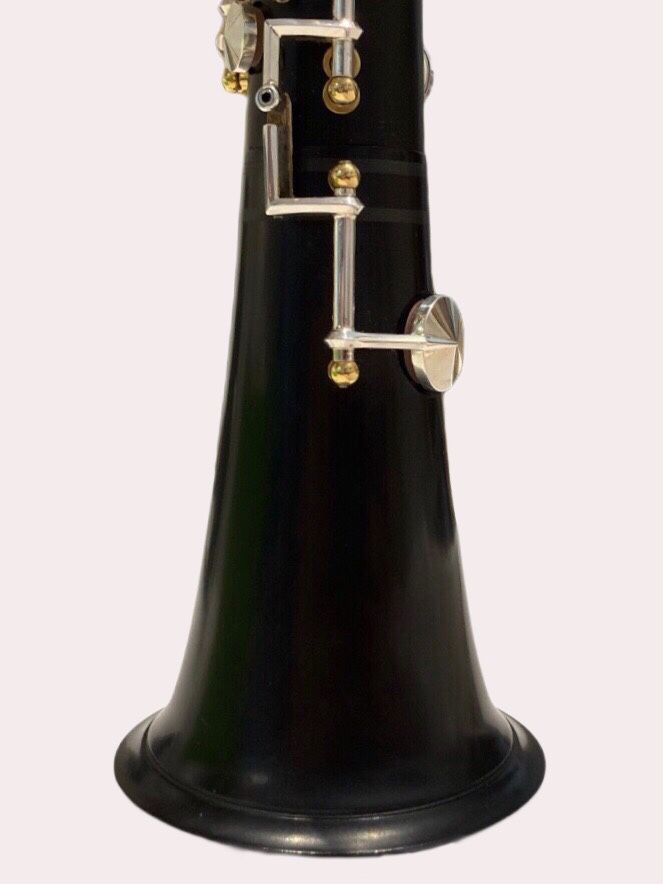
with low-e mechanism

with low-e-f mechanism
ABOUT VIENNA
CLARINETS
The clarinet with the German fingering system: A worldwide renaissance
Our instruments with the German fingering system are by no means limited to Austria and Germany, but are now being used more frequently all over the world. The origins of this system go back to the tone hole arrangement of historical clarinets and are characterized by a (played) G major scale without fork fingerings. A sound experience that fascinates musicians and listeners alike.
Innovation since the late 19th century
Since the late 19th century, almost all clarinets with the German fingering system have also been equipped with an extended keywork. Most of its semitone holes are open, which allows a chromatic scale to sound evenly. This innovative development enables versatile and precise sound control that will delight musicians.
The peculiarity of the Vienna sound tradition
In Austria and elsewhere, the use of a special mouthpiece/reed combination has preserved the need for a clarinet with a wide bore and therefore less blowing resistance. The striving for a soft and incomparably velvety sound inspires musicians all over the world. We therefore also offer all the necessary tuning pitches for orchestras and ensembles with Vienna requirements.

The Vienna bore
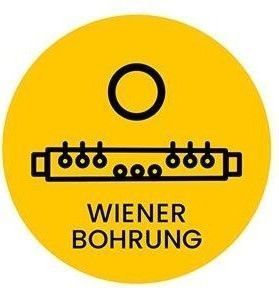
Our Vienna model combines the wide bore that is historically characteristic of this instrument with body dimensions that are unique to Schwenk & Seggelke. This model is based on the design of instruments used in Vienna since the 1950s.
The right
Mouthpiece DOES IT
Perfection in the art of the clarinet
The mouthpiece plays a decisive role in the blowing resistance and intonation of the instrument. For Seggelke clarinets, we recommend playing our instruments with mouthpieces with the bore we have modified. These customized mouthpieces bring out the full potential of your clarinet and let your musical interpretation shine.
Why a unique specimen?
Why Schwenk & SEGGELKE?
Each Schwenk & Seggelke clarinet is unique and represents the time and experience, craftsmanship and love of music that we put into our instruments. Discover how hundreds of separate parts are turned into innovative art and incomparable sound.
MANY YEARS OF EXPERIENCE
CRAFTSMANSHIP
FASCINATING
SOUND EXPERIENCE
INDIVIDUALLY
TAILORED


